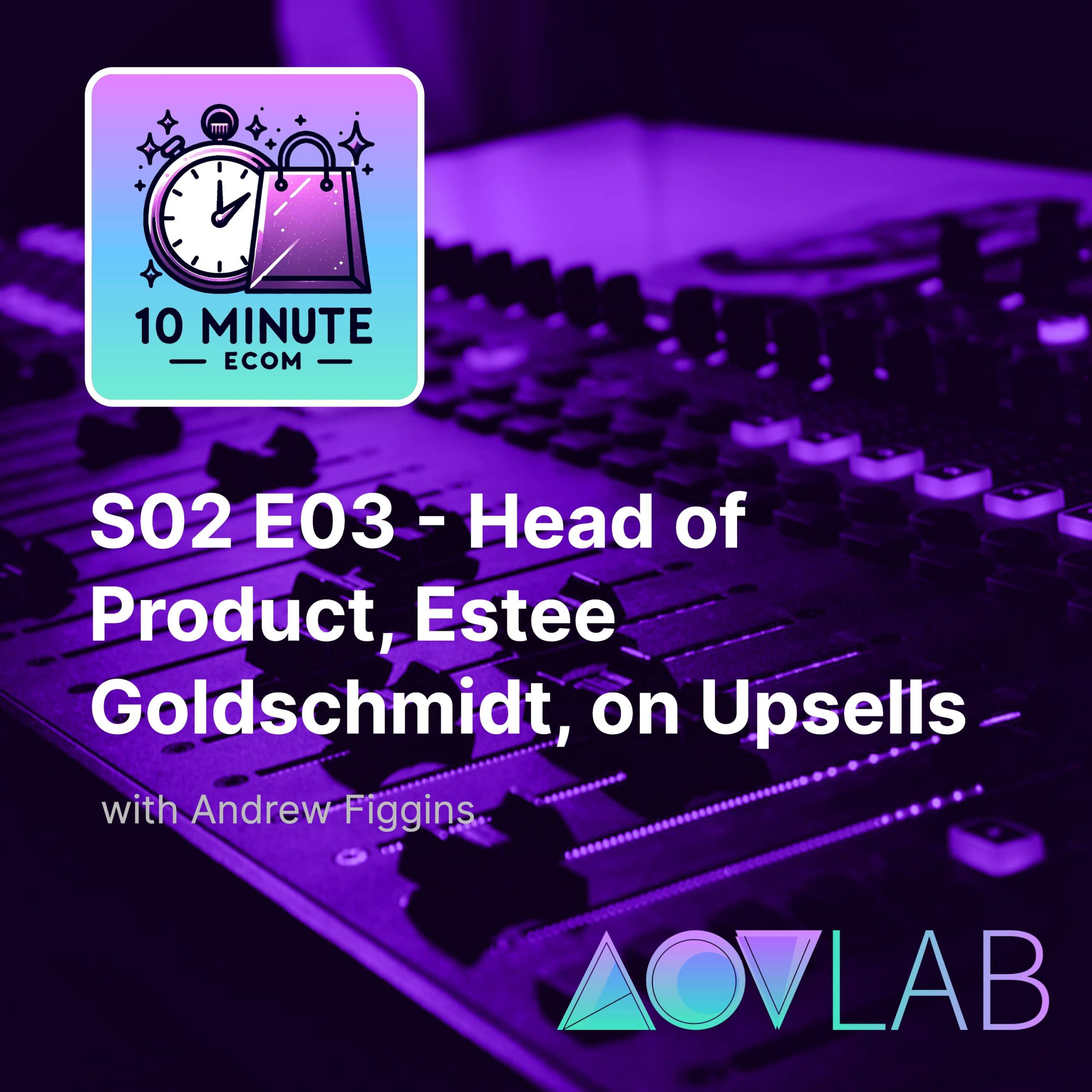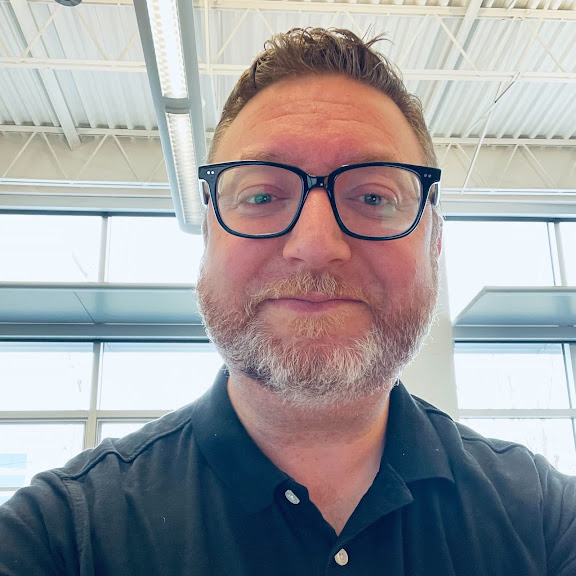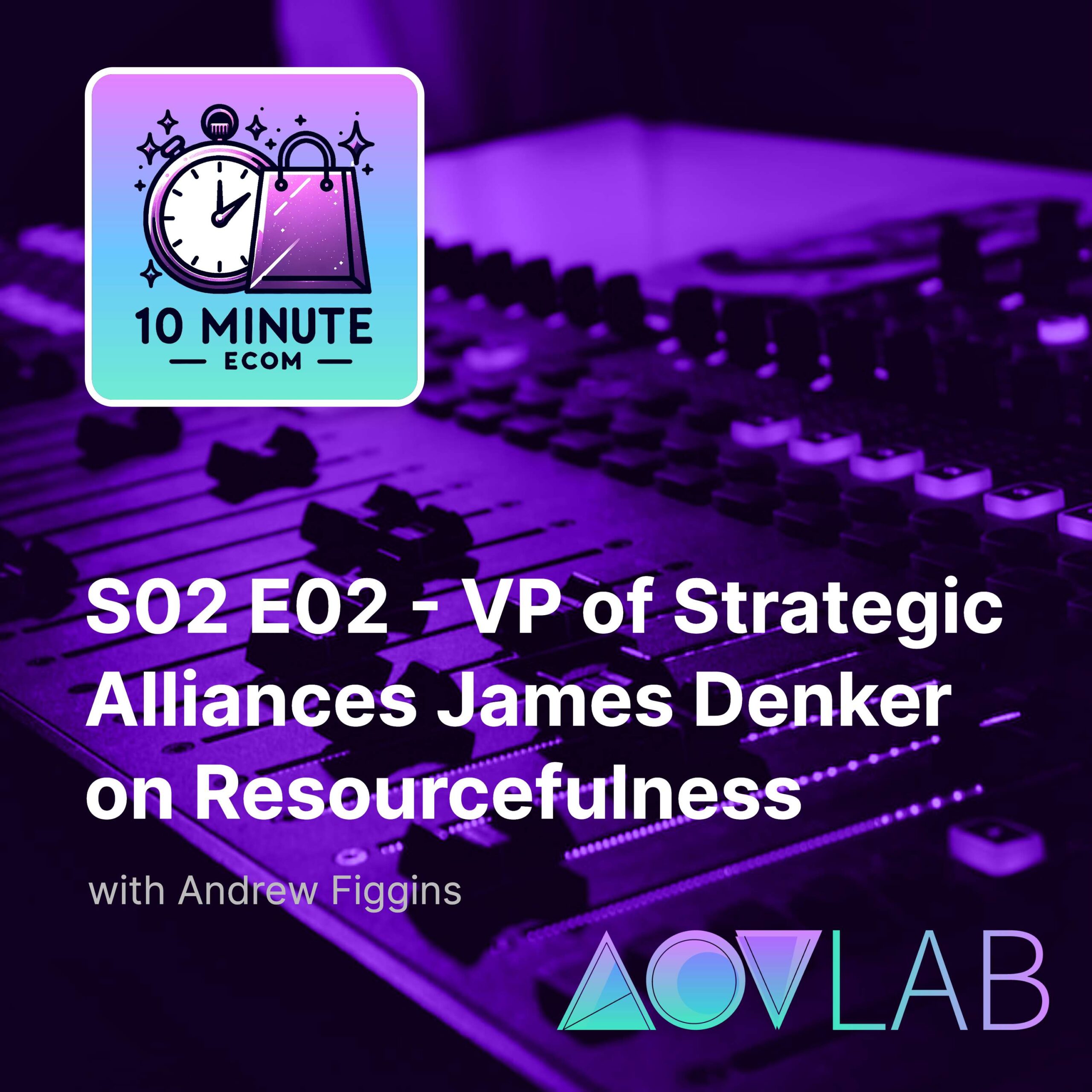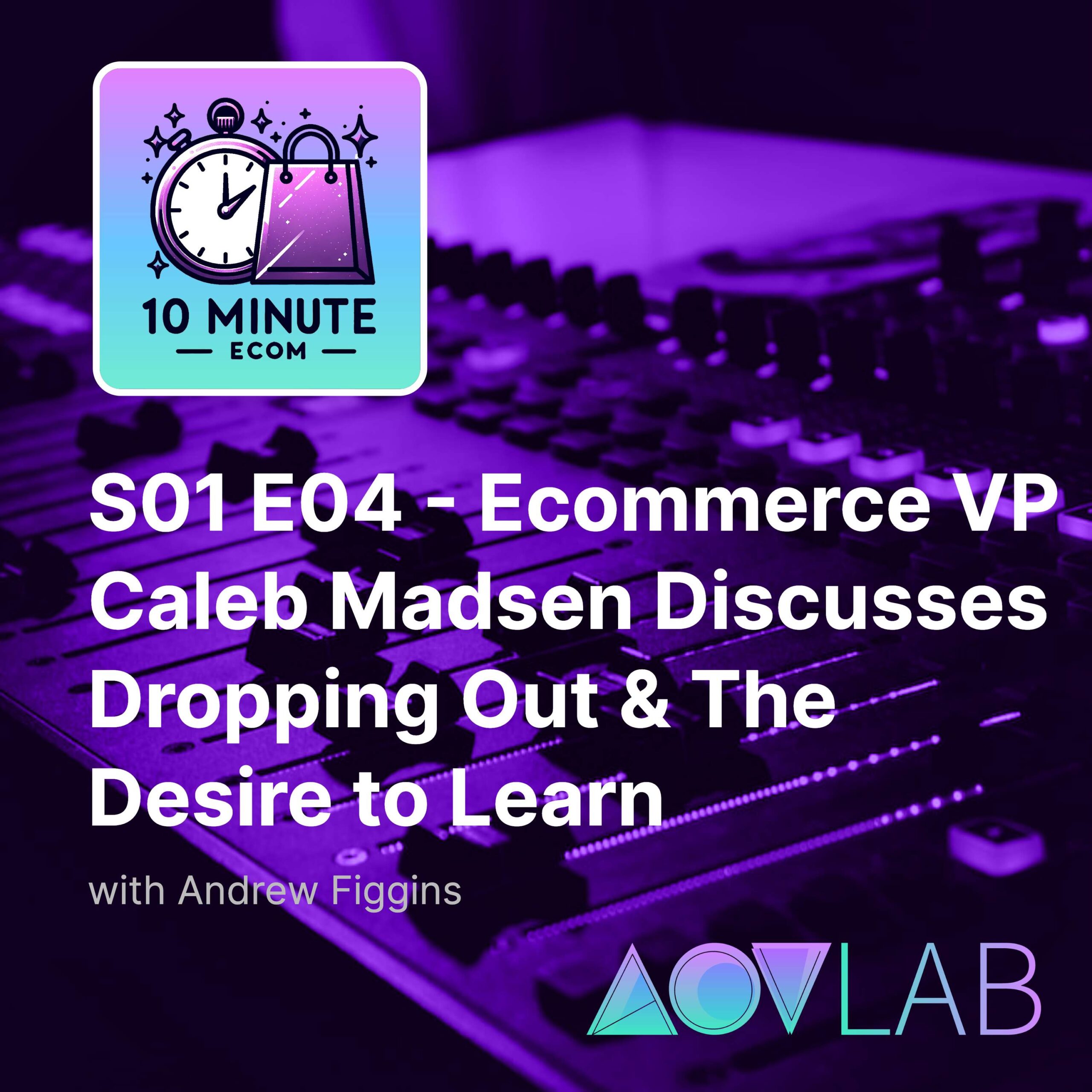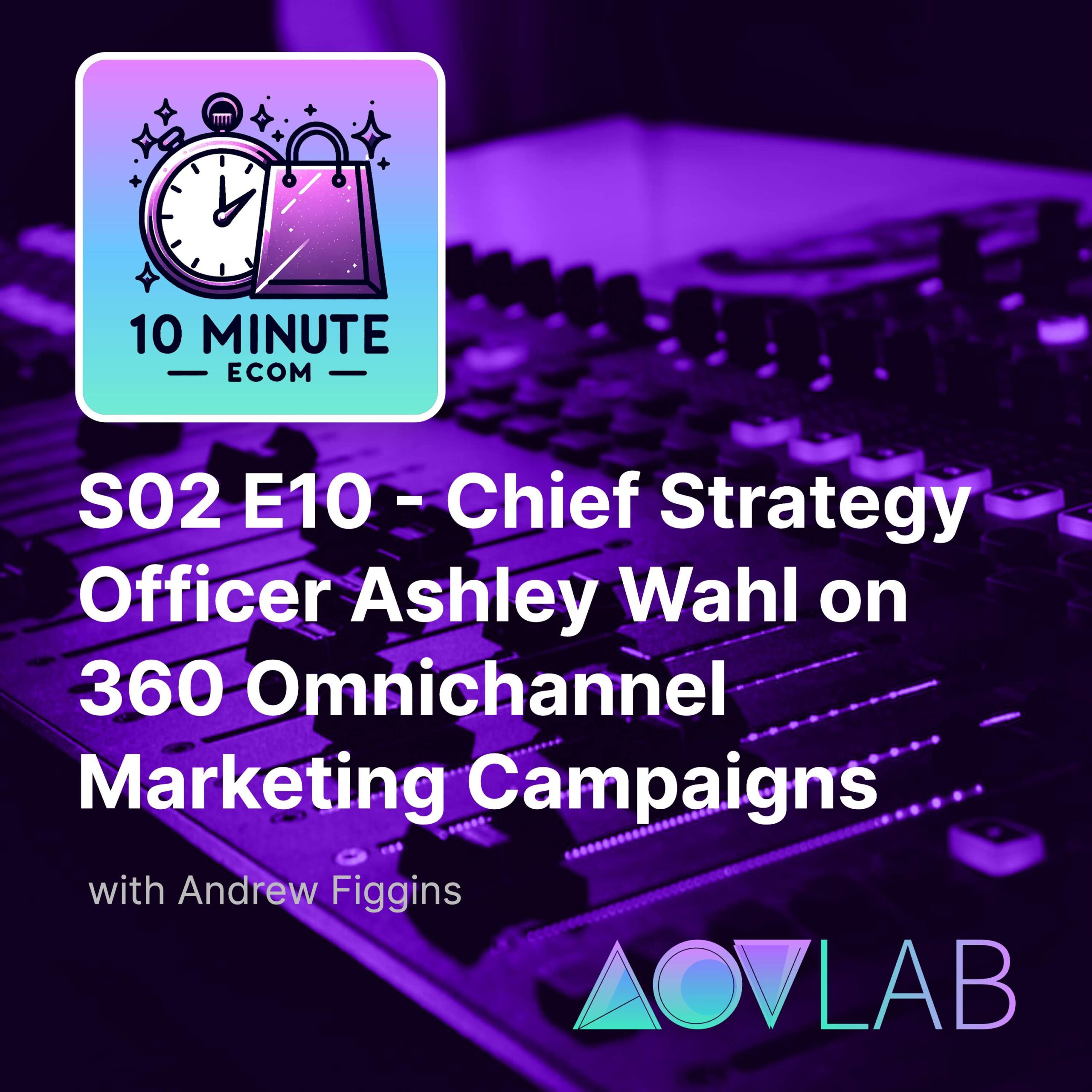View Full Transcript
Episode Transcript
[00:00:07] Speaker A: Hello, ecommerce fans, and welcome to ten minute Ecom, an AOV Lab podcast. Every episode we break down a new and different tactic that can help you improve your ecommerce KPIs key performance indicators I'm your host, Andrew Figgins, and like most of you, I am an ecommerce professional. You may know me as the founder of AOV Lab, the former vp of product innovation at Scrubs and beyond, or is the former director of e commerce technology at Rural King. Today I'm excited to be talking to Estee Goldschmidt, an e commerce colleague who is doing incredibly interesting work in ecommerce and has some great tips and tactics for you today. Anyway, Estee, what did you come on the show to share today with your e commerce colleagues?
[00:00:50] Speaker B: Hello. I am Estee, currently head of product at thesis, a nootropics company.
Today I want to talk to you about how to increase the average order value.
[00:01:00] Speaker A: Thank you, Estee. After the ad, we'll get right into the chat.
Today's episode of ten minute Ecom is brought to you by shop AOV Lab. It is a brand new store with fun apparel and gear specifically for Ecom professionals just like you and me. We've got high quality embroidered and printed t shirts, hoodies, and hats that will spice up any Zoom call or in person meeting with your team. If you lead a team, these products make for awesome gifts to celebrate hitting a conversion rate or average order value milestone. If you work in ecommerce, I think you'll not only find some humor in these products, but also a sense of pride for what you do every day. Again, the site is shop AOV Lab. Head over right now and browse while you listen. Unless you're driving. In that case, pull over. You've got to see and share these products one last time. The website is shop aov lablab.com.
And now back to the show.
[00:02:05] Speaker B: The trick we're going to discuss is upselling and cross selling. So you're selling a core product, or someone comes to your website to buy product ads, and that product costs $50. If they check out with $50, that's great. You wanted to sell a product and you did. But there's an opportunity to give the customer something else. But they also want that maybe they didn't think of initially, and then they get to spend $70 with you. Now, there's a good way to do this and a bad way to do this. And in terms of how the customer experiences it, a good way is where the customer says, oh gosh, thank you I didn't even realize I need that, and now I have it. So that x works perfectly. A bad way to do it is the worst way is ethically problematic, where a customer will say, I didn't even realize I bought this additional thing and I'm spending so much money. We really don't want to go down that path. But another bad way is where the upsell flow is so irrelevant or so long that a customer says, oh gosh, I really don't want this. Stop selling me. I'm out.
So today we're going to discuss five rules for upselling successfully. So just before we discuss the rules, I'm going to do a quick plug for my podcast where we discuss product, digital product. That's the SD show. And with that, is that okay, Andrew?
[00:03:28] Speaker C: Absolutely. Yeah, that's cool.
[00:03:30] Speaker B: Okay. And with that, let's jump in. So the first thing we want to discuss is be ethical. Make sure that if you're selling something additional to your customer, that your customer is aware that they're adding an additional thing to their cart and they're going to be required to pay for it. Number two, pricing. This might seem trivial, but if someone is buying something from you, let's say a medication that's $50 or a formula, then if you are selling a dispenser that's $150, that's such a huge gap from what the customer is paying. Don't do it. Instead, you want to be in the 20% to 30% range of what the customer already paid you. If the core product is 50, think about the supplementary product being up to $20, where it makes sense. Okay, I'll add this additional thing so that this thing works better. Where that rule doesn't apply is where it's not so much upselling but more cross selling. So Amazon does this successfully, and fashion brands have an opportunity to do this well, too. So Amazon, as most people listening, will probably know, customers who bought this also buy. We're offering a bundle. If you buy this and this together, it will cost. And very often Amazon doesn't even discount that. But you have the opportunity to say, buy those two, three things together and we'll discount it. So in that case, it doesn't necessarily have to be cheaper because each item on its own, it's not a supplementary item. It's an independently powerful item. For fashion brands, if someone's buying shoes that they think are the coolest shoes ever, there's a good chance that they're thinking, I love those shoes, but I have no idea what to wear them with. So to say, these shoes would go well with this top, with this belt, with this skirt, et cetera. And customers very often will feel grateful for that. Just think of all the styling businesses out there that charge for the styling separately, and here you're offering that service for free.
[00:05:21] Speaker C: I love it. And welcome to the show, by the way, it's so great to have you here today, and I'm super excited to talk about upselling with you. And I like that you brought up the ethical concern right away as the number one, because there absolutely is that tendency, I think, and I've seen it certainly as a shopper before, to feel like I'm leaving something behind. Like I'm not just buying an item, I'm buying something that needs to be a solution for me, for whatever it is. Like, I go camping every August with my buddies, and so when I go to Rei, I don't want to leave Rei until I have got everything in my basket to my wife's disdain. But tell me a little bit about maybe something from your experience where you went through this and maybe experienced it the negative way and what taught you get to this other way of thinking.
[00:06:10] Speaker B: Yeah, that's a great question. We say some of the best lessons we learn were from our mistakes. And in this case, for me, it's definitely true. One company I worked at, which we will not name right now, but had a core product that was sold for $85 and then an add on that was offered immediately after the person bought the $85 product. The add on was an upgrade from $85 to $259, and it was complicated because it was the subscription. So the initial pricing was discounted, and there was a strikeout saying, the first month you won't pay 85, you'll pay 30, and then the next amount, it wasn't like, you won't pay 259, you'll pay less, you'll pay an additional amount. That was struck out. So just as soon as I saw it, I said, I think users might be confused. And what we saw was that for people who did take the upsell, the churn, the cancellation rate was extremely high. So what I did was a usability test. There's this tool called Maze, where you put in screens that people would see in real life, and then you can ask potential customers questions and see our customers understanding the designs and the website the same way you had intended it when you built it. So the question we asked is, we showed the first screen and we said, imagine you check out, and then you see this screen and imagine you take it as well. And the question was, how much did you just commit to pay every month? 100% of the participants got the amount wrong. Some were off by 10%, but some were off by 100%. So we came back to the table and we're like, okay, people, this is really unclear communication, bordering unethical. And we redesigned the flow to be very clear about the financial commitment that would be required if someone took that upsell. And the behavior we saw once they implemented the change was that many fewer people took the upsell dropped double digits, but the retention rate for those same people went up by double digits, actually by more than the decline in the acquisition. And over time, that did end up netting out positively. But that was, I would say the biggest lesson for me in upsell and then the other one related to that same example is instead of thinking like, oh, I as a business have 40 items that I need to get rid of, how do I stuff them into customers carts? Think instead a customer who's purchasing this, what does that customer need? What would that customer appreciate or might not think they need now, but they will definitely need it down the road. And you can be preemptive and say, hey, we know you're going to need this, take it.
So I would say those were my biggest learnings.
[00:09:08] Speaker C: That makes a lot of sense. And yeah, I think a lot of the mistakes that can be made in ecommerce I've certainly made in my past as well. So thanks for sharing that. You came on the show to share a variety of tactics to help with aov and increasing that. What's the next thing that you wanted to chat about in that area?
[00:09:29] Speaker B: So we spoke about the ethical component. Be ethical pricing. Make sure the pricing is a portion of the item that's being bought if it's an upsell, or it could be more comparable if it's a compatibility purchase.
Think about cross selling. What does a customer want in relation to the item? The next one is don't think what does the business want to push? Instead, think what does the customer need? And then those all we covered. And then the last three points would be consider selling samples to introduce new products to customers. So if a customer bought product a and product b might not be. It might be an alternative, it might be an addition, but it's not really something ublade needs, but they might benefit from it. Say, hey, the full size thing costs $20. Would you want to just try it for $5?
Similar concept, but consider adding stuff for free.
Is it worth it? Taking probably cost fifty cents to produce that sample, would you want to send it to someone? And there's a chance that of the people who see it, x percent will actually go back and say, I really liked it, I want to buy the full item. Funny story, when I worked at Estee Lauder before the digital world and business school and all of that, but I actually worked on the sampling program. And Estee herself back in the day, was the first beauty entrepreneur to introduce the idea of sampling. And she would go to events where her target customer was like those rich dinners and she would put lipsticks on the table so that they can try it. And then they would say, okay, where do I buy it?
And then cool. The last idea. Consider adding, if this is something someone will want continuously and it's already a subscription, consider enticing the customer to buy more of it at a larger discount now. So for me, I'm a mom. I buy formula. And then when Amazon says, hey, it's seventy cents an ounce, but if you buy four of them now, it's going to be, I'm like, I will definitely need four. So as long as I could figure out where to store it, it's a worthwhile package for me and Amazon. Just nearly four x their revenue, their average order value for that particular order. So those were my nuggets. If people have more, please reach out. I would love to discuss.
[00:11:46] Speaker C: Thanks so much st, for coming on the show today, sharing these tactics. I know it's going to help some folks out there raise their aov, which is outstanding. Before we head off today, is there anything else you'd like to share? We've got an audience here of ecommerce professional. Any other tidbits that you'd like to leave them with today?
[00:12:05] Speaker B: Yeah, the tidbit I'll leave you with is my number one rule for any digital product leader. And you listen to the episodes I had, you'll see a lot of it. But it's know your customer, be customer obsessed, speak with your customers, get on phones with your customers, because ultimately understanding who your customer is, what they want, if you're leading business strategy from that perspective, that's how you'll be able to cater to the customer and improve the business.
[00:12:32] Speaker C: Thanks so much again for coming on the show today. St been a pleasure.
[00:12:35] Speaker B: Thank you, Andrew. So much fun.
[00:12:37] Speaker A: Well, we have hit that ten minute mark, so that's a wrap for today's episode. I want to again thank our guest, Estee Goldschmidt. If you have a moment, be sure to subscribe like or follow the show on Apple Podcasts, Spotify, Amazon Music, Google Podcasts, or wherever it is that you listen. As mentioned earlier in the episode, please head on over to shop AOV Lablab.com, our brand new store that helps to support this podcast. It is launching with nearly 100 products, so plenty to choose from. Our top seller so far is a shirt that simply says Ecom on it. I wear it around my extended family so I could point to it when my relatives ask me what I do.
I hope you enjoyed this episode of the show. Until next time, this is Andrew Figgins signing off and saying have a good one.
